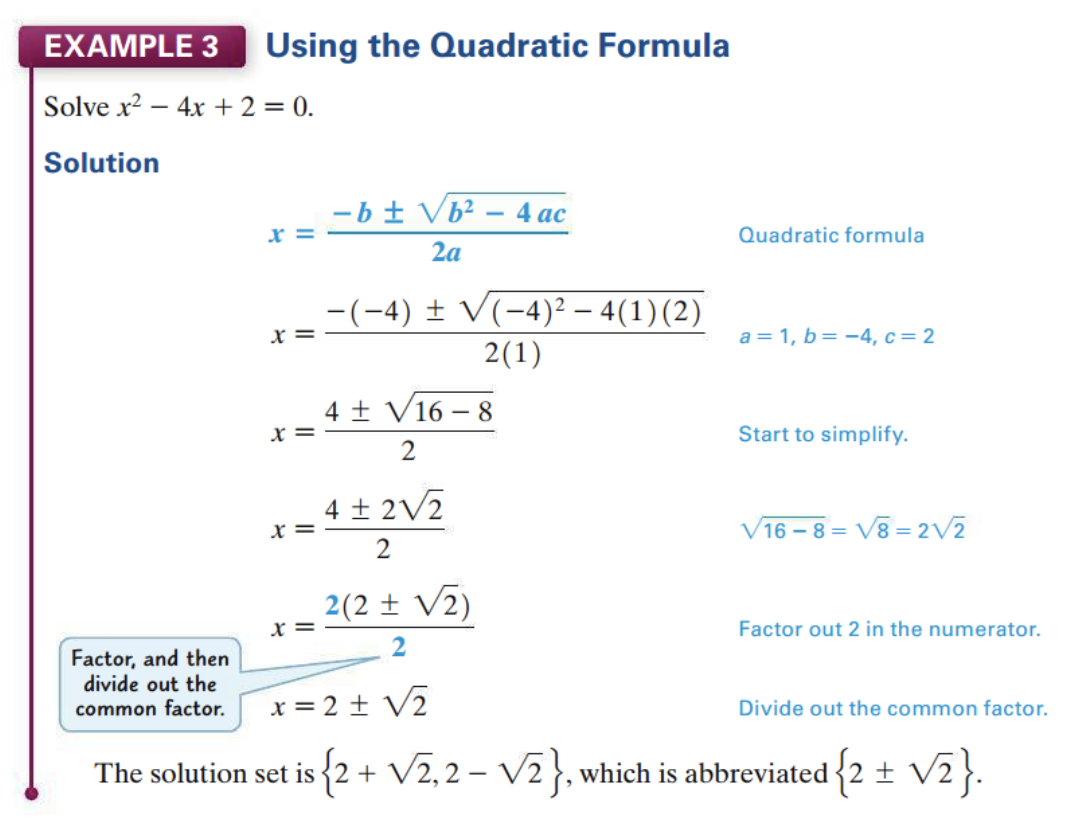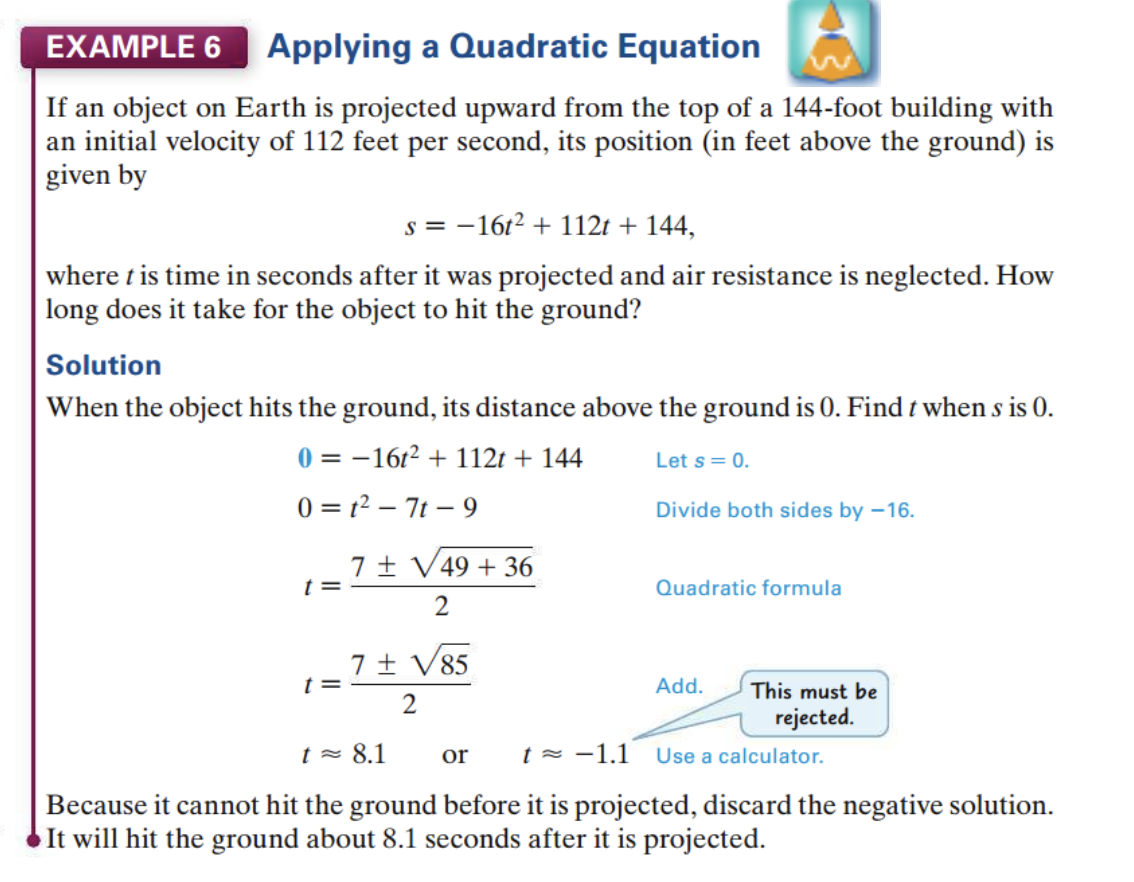[Func-Num] 7.7 Quadratic Equations and Applications
Categories: Func-Num
Tags: Quadratic
📋 This is my note-taking from what I learned in the class “Math175-002 Functions & Number Systems”
Objectives
- Recognize a quadratic equation in standard form.
- Use the zero-factor property to solve a quadratic equation (when applicable).
- Use the square root property to solve a quadratic equation (when applicable).
- Use the quadratic formula to solve a quadratic equation.
- Solve an application that leads to quadratic equations.
Quadratic Equations and Applications
- Quadratic Equations
- Zero-Factor Property
- Square Root Property
- Quadratic Formula
- Applications
1. Quadratic Equations
We have considered linear equations and inequalities in earlier sections. Now we investigate second-degree, or quadratic, equations.
An equation that can be written in the form
Standard form: ax2 + bx + c = 0
where a, b, and c are real numbers, with a≠0, is a quadratic equation. The form of the equation given above is called standard form.
2. Zero-Factor Property
One method of solving a quadratic equation depends on the following property.
If ab = 0, then a = 0 or b = 0 or both.
Solving a quadratic equation by the zero-factor property requires that the equation be in standard form before factoring.
Example: Zero-Factor Property
Solve 6x2 + 7x = 3.
| Solution | |
|---|---|
| 6x2 + 7x = 3 | Given equation |
| 6x2 + 7x - 3 = 0 | Write in standard form |
| (3x - 1)(2x + 3) = 0 | Factor |
| 3x - 1 = 0 or 2x + 3 = 0 | Zero-factor property |
| 3x = 1 or 2x = -3 | Solve each equation |
| x = 1/3 or x = -3/2 | Divide |
Check. Substitute \({1} \over {3}\) and - \({3} \over {2}\) in the original equation. The solution set is { \({1} \over {3}\) , \({3} \over {2}\) }
3. Square Root Property
If k >= 0, then the solutions of x2 = k are + $\sqrt {k}$ or - $\sqrt {k}$
- If k > 0, the equation x2 = k has two real solutions.
- If k = 0, there is only one solution, 0.
- If k < 0, there are no real solutions → (In this last case, there are complex solutions. Complex numbers are covered in more extensive algebra texts.)
A quadratic equation of the form x2 = k, k >= 0, can be solved as follows.
| Solution | |
|---|---|
| x2 = k | Given equation |
| x2 - k = 0 | Subtract k |
| (x + sqrt{k})(x - sqrt{k}) = 0 | Factor, using radicals |
| x + sqrt{k} = 0 or x - sqrt{k} = 0 | Zero-factor property |
| x = - sqrt{k} or x = sqrt{k} | Solve each equation |
This leads to the square root property for solving equations.
Example: Square Root Property
Solve each quadratic equation for real solutions.
a) x2 = 36 → The solution set is {+6, -6}
b) (x - 1)2 = 8 → The solution set is {1 + 2(sqrt{2}), 1 - 2(sqrt{2})}
c) m2 = -5 → No real solutions, the solution set is ∅.
4. Quadratic Formula
By completing the square (see the margin note at left), we can derive one of the most important formulas in algebra, the quadratic formula.
The solution of $(ax^2 + bx + c = 0)$, $a \ne 0$, are given by the quadratic formula.
\[x = {-b \pm \sqrt{b^2-4ac} \over 2a}\]Example: Quadratic Formula

5. Applications


Leave a comment